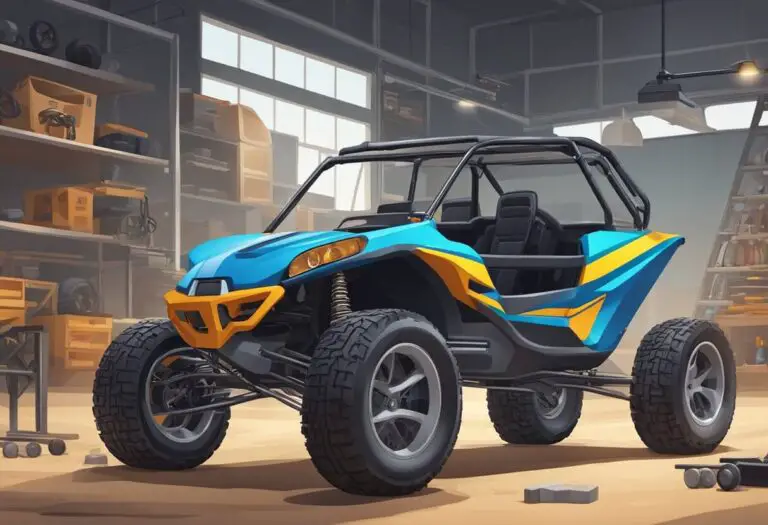Fiberglass Dune Buggy Parts: A Comprehensive Guide
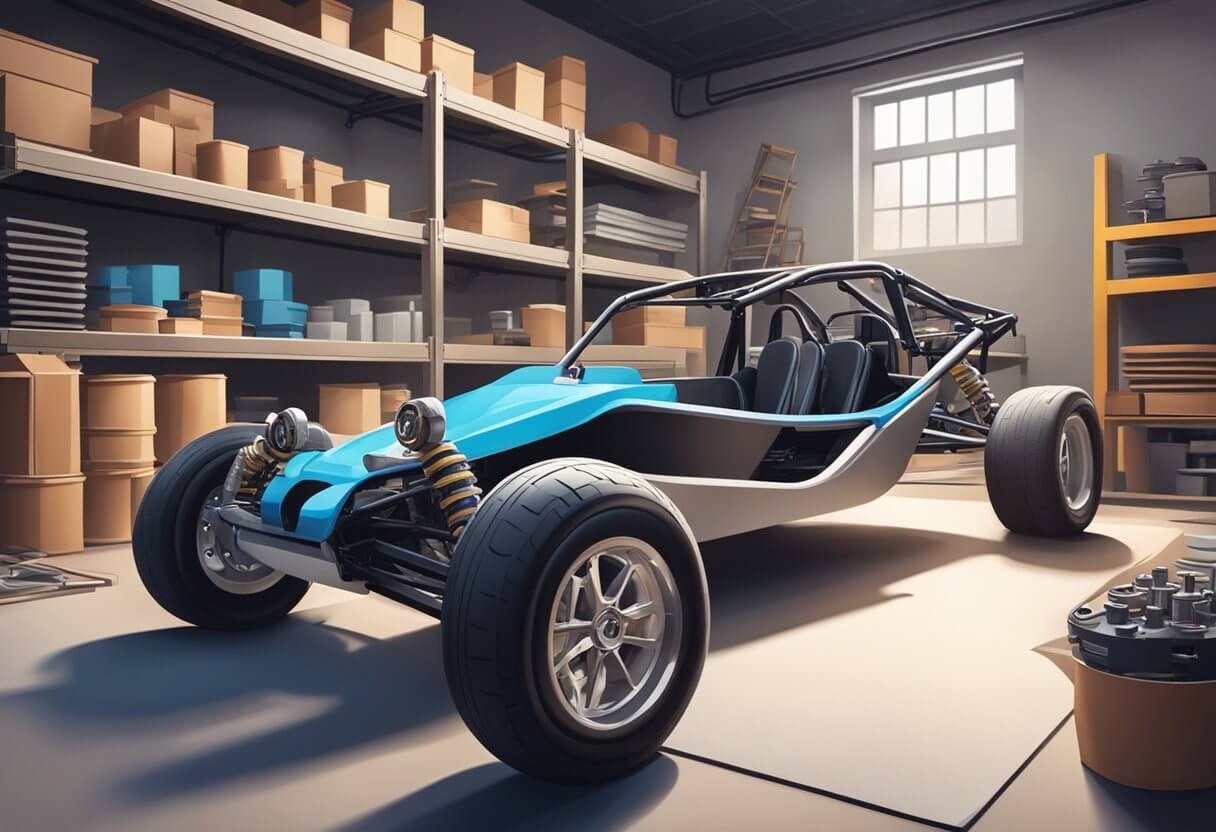
Fiberglass dune buggies are a popular type of off-road vehicle that are often used for recreational purposes. These vehicles typically have a lightweight fiberglass body that is mounted on top of a Volkswagen Beetle chassis. Fiberglass dune buggies are highly customizable, and there are a wide variety of parts and accessories available to help owners personalize their vehicles.
The history of fiberglass dune buggies can be traced back to the 1960s, when Californian engineer, artist, and surfer Bruce Meyers designed the original Meyers Manx dune buggy. This vehicle featured a fiberglass bodyshell coupled with a Volkswagen Beetle frame and engine. The Meyers Manx quickly became popular, and other companies began producing their own fiberglass dune buggy designs.
Essential fiberglass parts for dune buggies include the body, which is typically made from fiberglass and can be customized with a variety of paint colors and designs. Other essential parts include the chassis and frame components, which provide the structural support for the vehicle. Performance upgrades such as engine modifications and suspension upgrades can also be added to improve the vehicle’s speed and handling. Interior and accessories such as seats, seat belts, and sound systems can also be added to improve comfort and convenience.
Key Takeaways
- Fiberglass dune buggies are a popular type of off-road vehicle that are highly customizable.
- The history of fiberglass dune buggies can be traced back to the 1960s, when the original Meyers Manx dune buggy was designed.
- Essential fiberglass parts for dune buggies include the body, chassis and frame components, and performance upgrades.
History of Fiberglass Dune Buggies
Fiberglass dune buggies have a rich history that dates back to the 1960s. The first dune buggies were designed by Bruce Meyers, a Californian engineer, artist, and surfer. He created the Meyers Manx dune buggy, which was built between 1964 and 1971. The Meyers Manx was made with a fiberglass body shell and a Volkswagen Beetle frame and engine. It was a small car, with a wheelbase 14 1/4 inches shorter than a Beetle, which made it lighter and better for off-road driving.
By the end of 1969, many boat builders and fiberglass manufacturers in the United States began making dune buggies. Companies started making subtle changes and selling each other’s designs. Other companies came up with totally original ideas. There are over 225 different body styles identified in the Dune Buggy Association Archives.
During the 1970s, the popularity of dune buggies started to decline. However, in the 1990s, dune buggies experienced a resurgence in popularity. Today, many companies manufacture fiberglass dune buggy bodies and parts, making it easier for enthusiasts to build and customize their own dune buggies.
Types of Fiberglass Dune Buggy Bodies
When it comes to choosing a fiberglass dune buggy body, there are several options available in the market. In this section, we will discuss some of the most popular types of fiberglass dune buggy bodies.
Classic Manx Style
The classic Manx style fiberglass dune buggy body is the most iconic and recognizable design. It was first introduced in 1964 by Bruce Meyers and became an instant hit. The Manx style body is designed to fit on a Volkswagen Beetle chassis. It is lightweight, durable, and easy to maintain. The body features a sleek and aerodynamic design that makes it perfect for off-road adventures. The Manx style body is available in different colors and can be customized to suit individual preferences.
Tubular Sand Rail
The tubular sand rail fiberglass dune buggy body is another popular design. It features a tubular steel frame that is covered with a fiberglass body. The sand rail body is designed to provide maximum protection to the driver and passengers while driving on rough terrain. It is lightweight, durable, and can be customized to suit individual preferences. The sand rail body is available in different colors and can be fitted with different types of accessories such as lights, mirrors, and seats.
Modern Custom Designs
Modern custom designs are becoming increasingly popular among fiberglass dune buggy enthusiasts. These designs offer a unique and personalized look to the dune buggy. Modern custom designs can be created using computer-aided design (CAD) software and 3D printing technology. This allows for precise and accurate designs that can be customized to suit individual preferences. Modern custom designs can be made to fit on different types of chassis and can be fitted with different types of accessories.
Choosing the right fiberglass dune buggy body ensures safety and enjoyment during off-road adventures. Popular options include the classic Manx style, tubular sand rail, and modern custom designs. Each design offers unique features and benefits, suiting different off-road needs.
Essential Fiberglass Parts
When it comes to building a dune buggy, fiberglass parts are essential for creating a lightweight and durable vehicle. Here are some of the most important fiberglass parts that are necessary for building a dune buggy:
Hoods and Front Clips
The hood and front clip are some of the most important fiberglass parts of a dune buggy. They not only provide protection to the engine but also give the vehicle an attractive look. Fiberglass hoods and front clips are lightweight and easy to install, making them a popular choice among dune buggy enthusiasts.
Fenders and Side Panels
Fiberglass fenders and side panels are also crucial components of a dune buggy. They protect the tires and wheels from debris while also giving the vehicle a sleek and stylish appearance. Fiberglass fenders and side panels are easy to install and can be customized to fit any type of dune buggy.
Rear Engine Covers
The rear engine cover is another important fiberglass part of a dune buggy. It not only protects the engine from dust and debris but also gives the vehicle a streamlined look. Fiberglass rear engine covers are lightweight and easy to install, making them a popular choice among dune buggy enthusiasts.
Chassis and Frame Components
Steel Chassis
Steel chassis is the ideal choice for dune buggy enthusiasts who want to add strength and stability to their vehicles. These chassis are made from high-quality steel, which is known for its durability and reliability. Steel chassis components are available in a wide range of sizes, shapes, and designs, making it easy to find the perfect fit for your dune buggy.
One of the key benefits of steel chassis is that they are easy to weld and modify. This means that you can easily customize your dune buggy to meet your specific needs and preferences. Steel chassis components are also highly resistant to corrosion and rust, which makes them ideal for use in harsh environments.
Aluminum Frames
Aluminum frames are another popular choice for dune buggy enthusiasts. These frames are lightweight, which means that they can improve the overall performance of your dune buggy. Aluminum frames are also highly resistant to corrosion, which makes them ideal for use in wet or humid environments.
One of the key benefits of aluminum frames is that they are easy to work with. This means that you can easily modify and customize your dune buggy to meet your specific needs and preferences. Aluminum frames are also highly durable and can withstand the rigors of off-road driving.
Roll Cages
Roll cages are an essential safety feature for any dune buggy. These cages are designed to protect the driver and passengers in the event of a rollover or other accident. Roll cages are available in a wide range of sizes and designs, which means that you can easily find the perfect fit for your dune buggy.
One of the key benefits of roll cages is that they can significantly improve the safety of your dune buggy. These cages are made from high-quality materials, which means that they can withstand the impact of a rollover or other accident. Roll cages are also easy to install and can be customized to meet your specific needs and preferences.
In summary, steel chassis, aluminum frames, and roll cages are all essential components of a dune buggy. Each of these components offers unique benefits, and choosing the right one will depend on your specific needs and preferences. With the right components, you can create a dune buggy that is both safe and fun to drive.
Performance Upgrades
When it comes to upgrading the performance of a fiberglass dune buggy, there are several options available. Here are three popular categories of performance upgrades:
Engine Performance Parts
One of the most common ways to improve the performance of a dune buggy is to upgrade the engine. There are several options available, ranging from simple bolt-on upgrades to complete engine rebuilds. Some popular engine performance parts include:
- High-performance carburetors
- Performance exhaust systems
- High-flow air filters
- Performance camshafts
- High-performance ignition systems
By upgrading the engine, drivers can expect to see improvements in horsepower, torque, and overall acceleration.
Suspension Kits
Another area where drivers can improve the performance of their dune buggy is in the suspension system. Upgrading the suspension can help improve stability, handling, and overall ride quality. Some popular suspension upgrades include:
- Heavy-duty shock absorbers
- Performance sway bars
- Lowering kits
- Adjustable coilovers
- Off-road suspension kits
By upgrading the suspension, drivers can expect to see improvements in handling, cornering, and overall stability on rough terrain.
Brake Systems
Finally, upgrading the brake system on a dune buggy can help improve stopping power and overall safety. Some popular brake upgrades include:
- High-performance brake pads
- Upgraded brake rotors
- Braided stainless steel brake lines
- Performance brake calipers
- Big brake kits
By upgrading the brake system, drivers can expect to see improvements in stopping distance and overall braking performance.
Interior and Accessories
When it comes to fiberglass dune buggy parts, the interior and accessories are just as important as the exterior. From comfortable seating to functional dashboards, these components can make all the difference in the driving experience.
Seats and Upholstery
The right seats and upholstery can make a huge difference in the comfort of a dune buggy. There are a variety of options available, including bucket seats, bench seats, and racing seats. It’s important to choose seats that are both comfortable and durable, as off-road driving can be rough on both the vehicle and the passengers.
When it comes to upholstery, there are many options available, from basic vinyl to high-end leather. It’s important to choose materials that are both comfortable and easy to clean, as dune buggies can get dirty quickly.
Dashboards and Consoles
The dashboard and console are the control centers of a dune buggy. They should be functional and easy to use, with all necessary controls within easy reach. There are many options available, from basic dashboards with simple gauges to high-tech consoles with GPS navigation and entertainment systems.
It’s important to choose a dashboard and console that fits both the style and functionality of the dune buggy. A simple, classic dashboard may be perfect for a vintage-inspired buggy, while a high-tech console may be ideal for a modern, high-performance vehicle.
Lighting and Electrical Components
Lighting and electrical components are essential for safety and functionality when driving a dune buggy. From headlights and taillights to turn signals and brake lights, these components are necessary for safe driving on and off-road.
In addition to basic lighting, there are many other electrical components that can enhance the functionality of a dune buggy. These include GPS navigation systems, entertainment systems, and even air conditioning units.
When choosing lighting and electrical components, it’s important to choose high-quality, durable components that can withstand the harsh conditions of off-road driving.
Wheels and Tires
When it comes to fiberglass dune buggies, wheels and tires are an essential part of the vehicle. The right set of wheels and tires can make all the difference in terms of performance and style.
One popular option for dune buggy wheels is the classic VW style wheel. These wheels are available in a variety of sizes and finishes, and are a great way to give your dune buggy a classic look. Many companies offer these wheels in both steel and aluminum, so you can choose the material that best suits your needs.
In terms of tires, there are several options available as well. Smoothy tires are a popular choice for dune buggies, as they provide good traction on sand and other loose surfaces. Razorback single raised rib tires are another popular option, as they offer good grip on hard-packed surfaces.
Selecting the correct tire size and type impacts dune buggy performance. Research thoroughly or consult professionals before purchasing. Wheels and tires crucially influence performance and style for dune buggy builds when chosen appropriately.
Maintenance and Care
Maintaining a fiberglass dune buggy is crucial to ensure its longevity and performance. Here are some tips to keep your buggy in top shape:
Cleaning
Regular cleaning is essential to keep the buggy looking good and functioning well. Use a soft-bristled brush or cloth to remove dirt and debris. Avoid using abrasive cleaners or harsh chemicals that can damage the fiberglass body. Instead, use a mild soap and water solution.
Waxing
Waxing the fiberglass body is an excellent way to protect it from the elements and keep it looking shiny. Apply a high-quality wax to the body and buff it with a soft cloth. This will help prevent dirt and grime from sticking to the surface.
Lubrication
Lubricating the moving parts of the buggy is crucial to ensure smooth operation. Use a high-quality lubricant to grease the suspension, steering, and brake components. This will help prevent wear and tear and extend the life of the parts.
Storage
When storing the buggy, make sure to cover it with a breathable cover to protect it from dust and debris. Avoid storing it in direct sunlight or extreme temperatures, as this can damage the fiberglass body.
By following these simple maintenance and care tips, you can keep your fiberglass dune buggy running smoothly and looking great for years to come.
Customization Tips
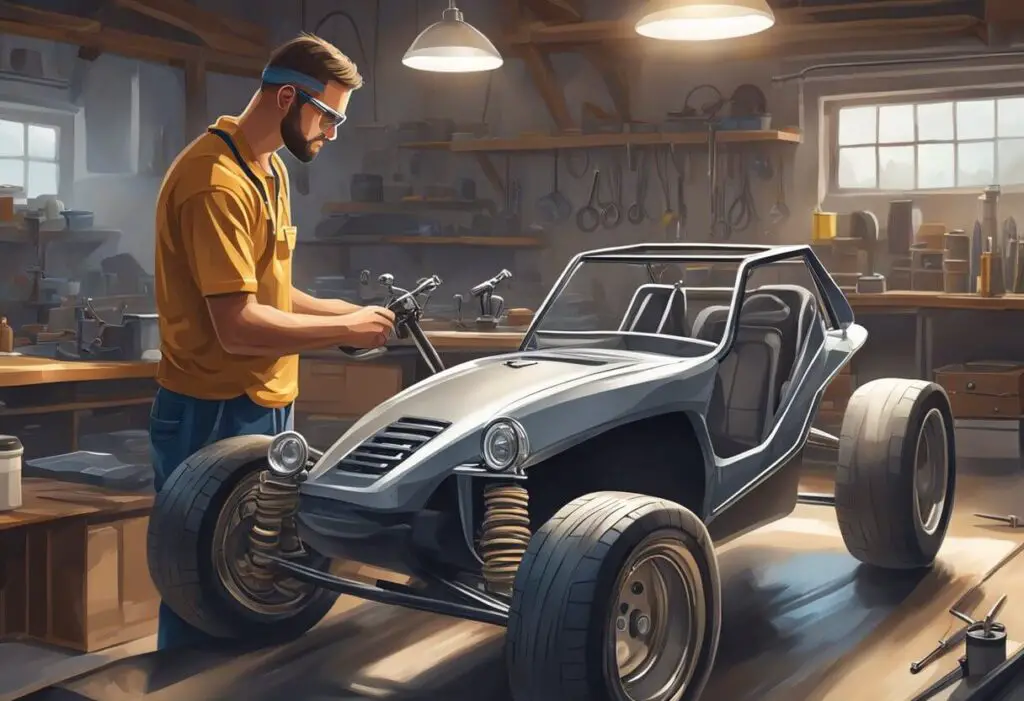
When it comes to customizing a fiberglass dune buggy, there are several options to choose from. Here are some tips to help you make the most of your customization options:
1. Body Styles
Fiberglass dune buggies come in a variety of body styles, including classic, sand rail, and baja styles. Classic styles are designed to mimic the original Meyers Manx dune buggy, while sand rail styles are built for high-performance driving on sand dunes. Baja styles are built for off-road driving and are often equipped with larger wheels and tires.
2. Paint and Graphics
Custom paint and graphics can add a unique touch to your fiberglass dune buggy. Consider choosing a color scheme that matches your personality or the environment in which you’ll be driving. Graphics can also be added to give your dune buggy a more personalized look.
3. Seats and Upholstery
The seats and upholstery in your fiberglass dune buggy can be customized to fit your needs and style. Consider adding racing seats for a sporty look or bucket seats for added comfort. Upholstery options include vinyl, leather, and custom fabrics.
4. Lighting and Accessories
Custom lighting and accessories can also be added to your fiberglass dune buggy. LED lights can be added for improved visibility, while accessories such as roll bars, bumpers, and winches can be added for added functionality and safety.
Overall, there are many customization options available for fiberglass dune buggies. By considering your needs and style preferences, you can create a unique and personalized vehicle that is perfect for your driving needs.
Safety Equipment
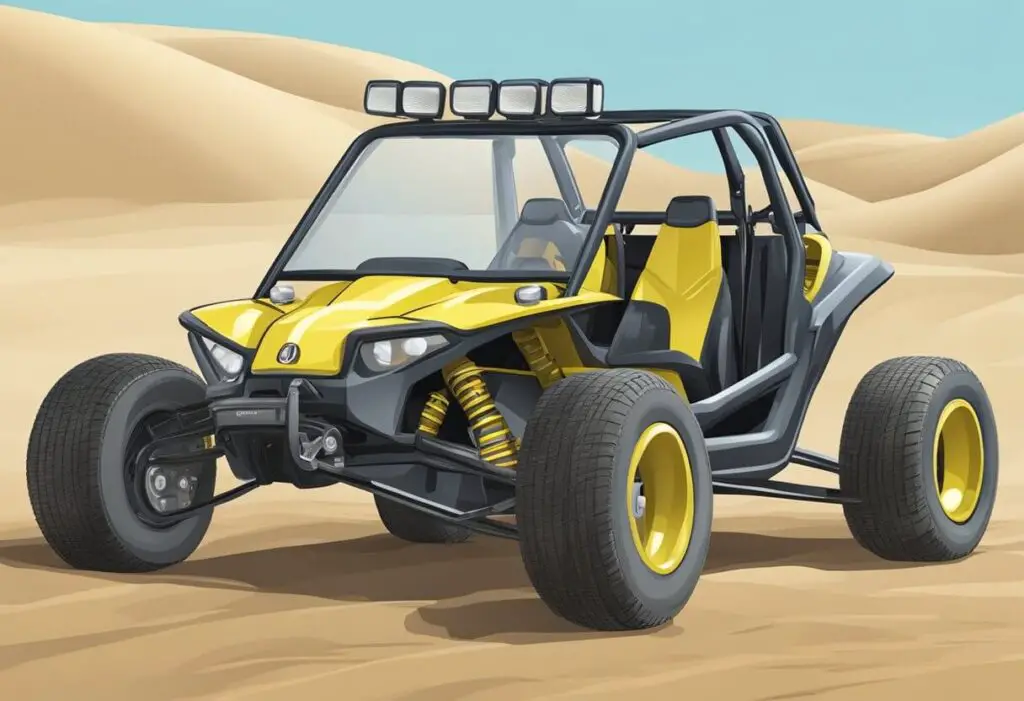
When it comes to driving a dune buggy, safety should always be a top priority. Fiberglass dune buggy parts are often used to build lightweight and agile vehicles, but that doesn’t mean safety should be compromised. There are a number of safety equipment options available for dune buggies to ensure that drivers and passengers stay safe while enjoying the ride.
One of the most important safety features of any vehicle is the seat belt. Dune buggies should be equipped with high-quality seat belts that are properly installed and adjusted. It’s also important to ensure that the seats themselves are securely mounted to the chassis. In addition to seat belts, roll bars or cages can provide additional protection in the event of a rollover or other accident.
Another important safety feature is the use of helmets. Helmets can protect the head and neck in the event of a collision or rollover. It’s important to choose a helmet that is properly certified and fits well. Full-face helmets can provide additional protection for the face and eyes.
Other safety equipment options for dune buggies include fire extinguishers, first aid kits, and emergency signaling devices. These items can help drivers and passengers respond quickly in the event of an emergency.
Safety equipment effectiveness requires proper installation and usage. Drivers and passengers must receive training on using all safety gear, always wearing seat belts and helmets while driving. Following these measures enables safe and protected enjoyment of dune buggy thrills.
Buying Guide
When it comes to purchasing fiberglass dune buggy parts, there are a few key features to consider to ensure that you choose the best product for your needs. Here are some factors to keep in mind:
Material Quality
One of the most important factors to consider is the quality of the materials used in the manufacturing of the parts. Fiberglass is a popular choice for dune buggy parts due to its durability and lightweight properties. However, not all fiberglass is created equal. It’s important to choose parts made from high-quality, durable fiberglass that can withstand the rigors of off-road driving.
Compatibility
Another important factor to consider is compatibility. Make sure that the parts you are considering are compatible with your specific make and model of dune buggy. This will ensure that the parts fit properly and function as intended.
Functionality
Consider the functionality of the parts you are considering. Are they designed to improve the performance of your dune buggy? Do they offer any additional features or benefits? Make sure that the parts you choose are designed to meet your specific needs and enhance the performance of your vehicle.
Price
Price is always a consideration when purchasing dune buggy parts. While it’s important to stay within your budget, it’s also important to consider the overall value of the parts you are considering. Look for parts that offer a good balance of quality and affordability.
By keeping these factors in mind, you can choose the best fiberglass dune buggy parts for your needs and ensure that your vehicle performs at its best.
Installation and Assembly
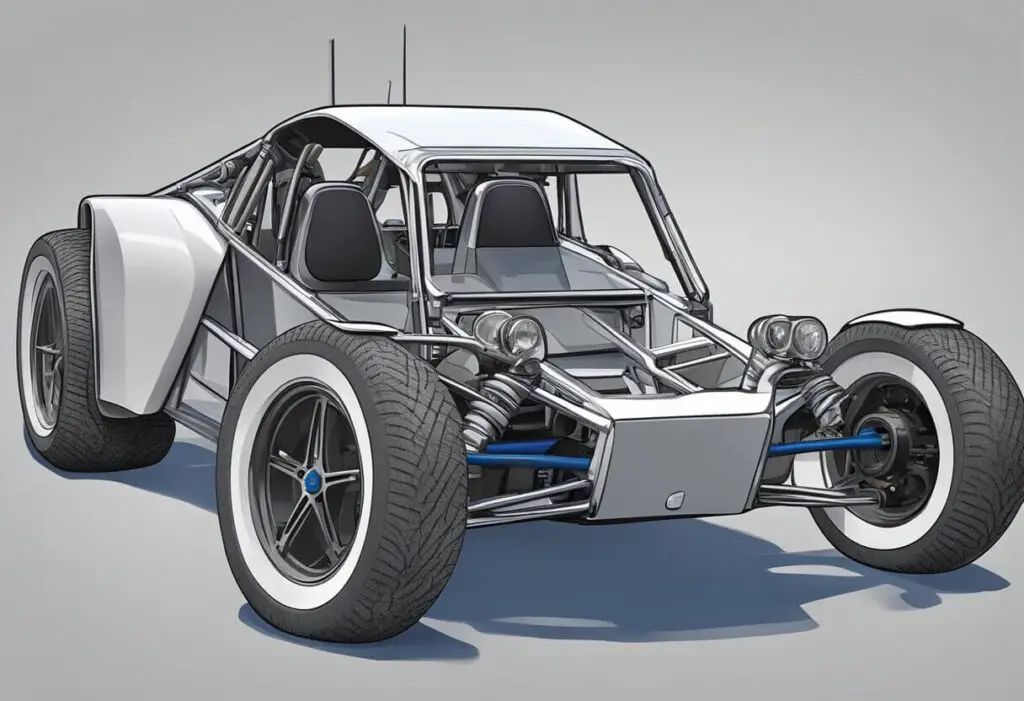
Installing and assembling fiberglass dune buggy parts can be a challenging task. It is important to follow the instructions carefully to ensure that the parts are installed correctly and safely.
Before beginning the installation process, it is recommended to gather all the necessary tools and equipment. This may include a socket set, wrenches, pliers, screwdrivers, and other tools. It is also important to have a clean and organized workspace to prevent any damage to the parts.
One of the most important steps in the installation process is to properly align and secure the parts. This can be done by using bolts, nuts, and washers. It is important to tighten these components to the manufacturer’s specifications to ensure that they are secure and safe.
Another important aspect of the installation process is to properly connect the electrical components. This may include connecting the battery, wiring the lights, and installing the ignition system. It is important to follow the manufacturer’s instructions carefully to ensure that these components are installed correctly and safely.
Troubleshooting Common Issues
Fiberglass dune buggies are a popular choice for off-road enthusiasts due to their lightweight body and excellent performance. However, like any vehicle, they can experience issues that need troubleshooting. Here are some common problems that dune buggy owners may encounter and how to troubleshoot them.
Engine Issues
If the engine is not starting or running smoothly, it could be due to a variety of reasons. The first step is to check the battery and ensure it is fully charged. If the battery is fine, then the issue could be with the spark plugs, fuel filter, or carburetor. It is best to take the buggy to a mechanic who can diagnose and fix the issue.
Shifting Problems
If the buggy is having trouble shifting gears or slipping out of gear, it could be due to a worn clutch or transmission. The clutch may need to be replaced, or the transmission may need to be rebuilt. It is important to address this issue promptly, as it can lead to further damage and safety concerns.
Suspension Issues
If the buggy is bouncing or bottoming out, it could be due to worn shocks or springs. It is important to check the suspension system regularly and replace any worn or damaged parts. Additionally, adjusting the tire pressure can help improve the ride quality.
Electrical Issues
If the buggy’s lights or other electrical components are not functioning properly, it could be due to a faulty battery or wiring. Check the battery and wiring for any damage or corrosion. It may be necessary to replace the battery or rewire the electrical system.
In short, troubleshooting common issues with a fiberglass dune buggy requires a basic understanding of the vehicle’s components and how they function. Regular maintenance and inspections can help prevent issues from arising, and prompt attention to any problems can help ensure the buggy remains safe and reliable for off-road adventures.

